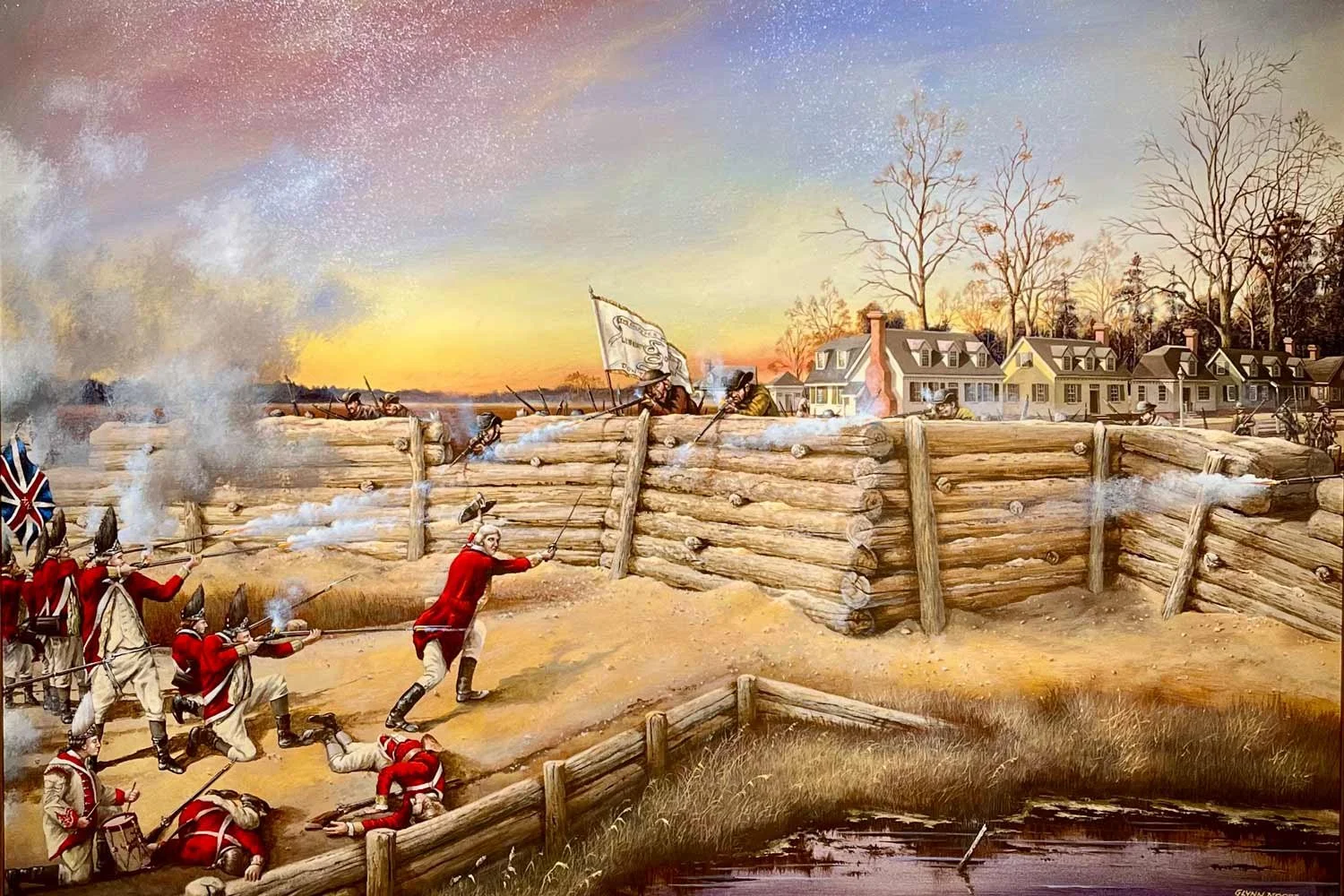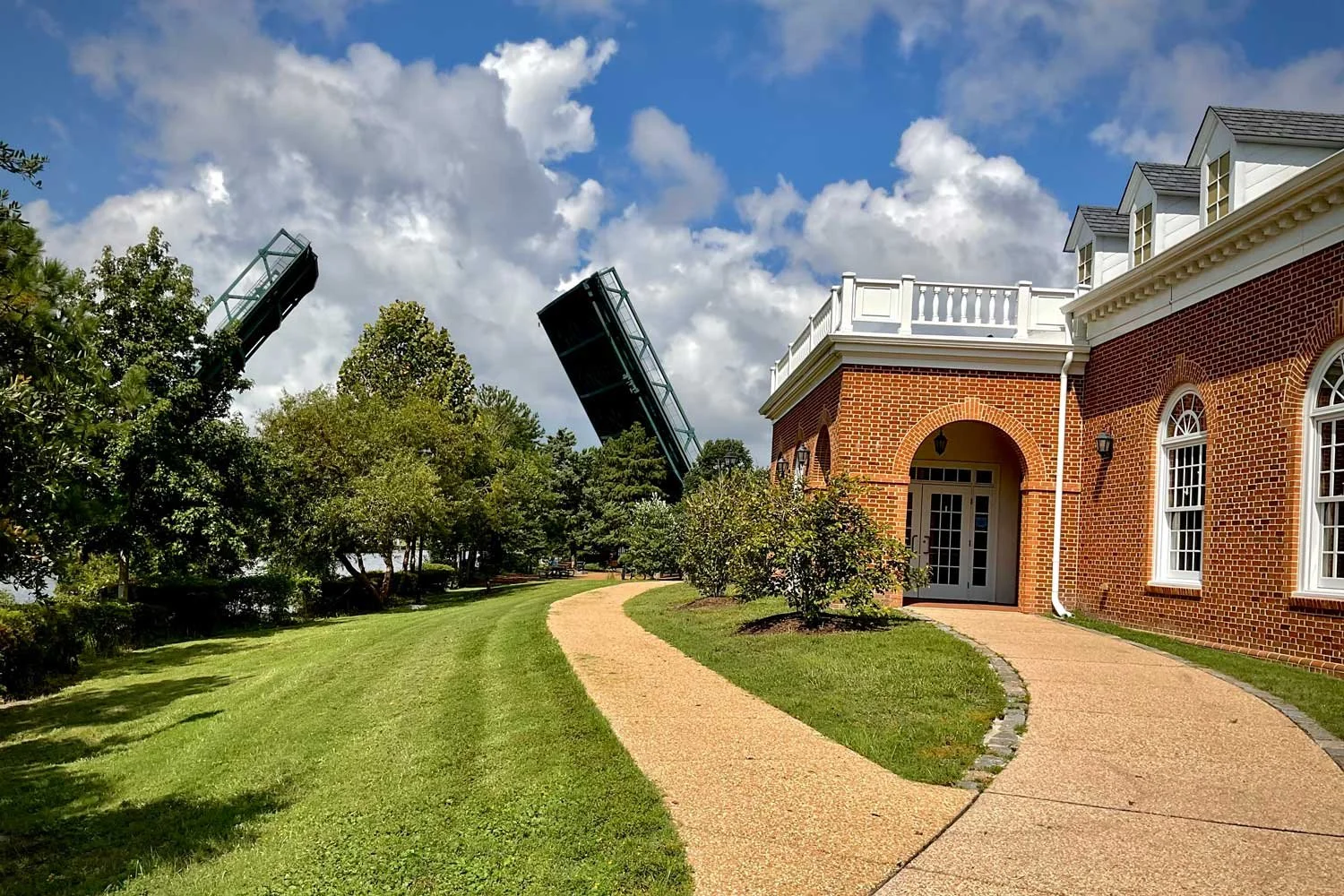
The History of the Battle of Great Bridge
The Battle of Great Bridge on December 9, 1775, played a critical role in the Revolutionary War and the subsequent creation of our great nation. It was this Patriot victory that forced Lord Dunmore, British Royal Governor of Virginia, and his soldiers to evacuate and ultimately leave Virginia. As a direct result of this victory, four days after this crucial battle, the Virginia Convention adopted the first public declaration expressing a spirit of independence. How different our country might be had it not been for the Battle of Great Bridge and the significant contributions of our waterways.
Patriots and British soldiers faced each other for eleven days and skirmished amid constant cannon fire before the climactic Battle of Great Bridge that lasted but a half-hour. In that short time, patriot volunteers showed that they could stand up to cannon fire and route a unit of the best professional soldiers in the world. Patriot soldiers poured heavy fire into the British Redcoats who marched relentlessly forward, wavered, and then came on again. Reinforcements joined Patriots in the breastwork and were ordered to withhold their fire until the British were within 50 yards.
It is historically significant to note that last among the Patriots to retreat was Billy Flora, a free black man. Before retreating into the Patriot breastwork, he ran back to take up a plank of the bridge amid a shower of musket balls to slow the British advance.
This was the first Patriot victory of the Revolutionary War. In winning the battle of Great Bridge on December 9, 1775, the Patriots effectively denied to the British Norfolk, the finest seaport between New York and Charleston.
Albemarle and Chesapeake Canal
Deriving its name for the two great bodies of water that it connects, the Chesapeake Bay in Virginia and the Albemarle Sound in North Carolina, this man-made canal was an engineering feat when it was completed in 1859. Today boaters can enjoy the views witnessed by sailing boats, commercial ships, barges and yachts traveling along this portion of the Intracoastal Waterway (ICW). Mileage is based on Mile Zero which is in the water off Portsmouth and Norfolk in the Elizabeth River.
The A&C Canal was originally known as the Chesapeake and Albemarle Canal and actually authorized by Virginia fifteen years before the Dismal Swamp Canal, but work was not begun until after a series of delays. During the first delay caused by the Revolutionary War, interestingly enough, the first land battle on Virginia soil took place at Great Bridge. In 1775 British troops, under the direction of Lord Dunmore, were defeated by the colonists and sent back to Norfolk. They remained in Norfolk for only two days and then boarded ships, not to return to Great Bridge. This first victory of the Revolution enabled the Americans to use the waters of the Chesapeake Bay for five years until the British regained a foothold in 1779. It is near this battle site, that in 1859 the single lock of the A&C Canal with reversible gate heads, probably the first of their kind, was built to allow ships to lock up or down depending on the water level. This lock was 200 feet long and 40 feet wide, the largest on the Atlantic Coast and the second largest in the United States.
The beginning of work on the Dismal Swamp Canal (1793), The War of 1812, lack of interest and lack of funds further delayed the building of the A&C. By 1854, numerous congressional acts had been passed enabling construction and in 1855 actual work finally began. While the DSC was dug largely with slave labor, the A&C was dug with nine steam dredges which operated on floating platforms. Seven of the dredges worked in Virginia and two in North Carolina. Completed in just four years, the canal created by the steam-driven technology was an engineering marvel.
The opening of the new canal in 1859 gave the owners of the DSC serious cause for worry. The A&C was the shorter of the two routes and received most of the boat traffic. Although the two canals coexisted for fifty-four years, the DSC could not compete when in 1912 the US Government bought the A&C and took off the tolls. As bankruptcy loomed for the DSC, the government bought its second canal in the area in 1929. Today, the US Army Corps of Engineers operates both canals toll-free.
Most of the Albemarle and Chesapeake (A&C) Canal’s route is unvaried, but there are several bridge crossings: North Landing at ICW milepost 20.2, Centerville Turnpike at 15.2, Norfolk Southern Railroad Bridge at 13.7, Chesapeake Expressway (Rt. 168) at 12.6, Great Bridge Bridge at 12.0. The locks are at 11.5. All of the bridges regularly opened along the A&C are operated by the U.S. Army Corps of Engineers. The A&C Canal allows for the connection of the Chesapeake Bay to the Albemarle Sound, via the Elizabeth River, North Landing River, Currituck Bay, and the North Carolina Cut of the Intracoastal Waterway to the North River which empties into Albemarle Sound. For more than 150 years, this inland passage has been a vital north/south link that has allowed the transport of people and products.

